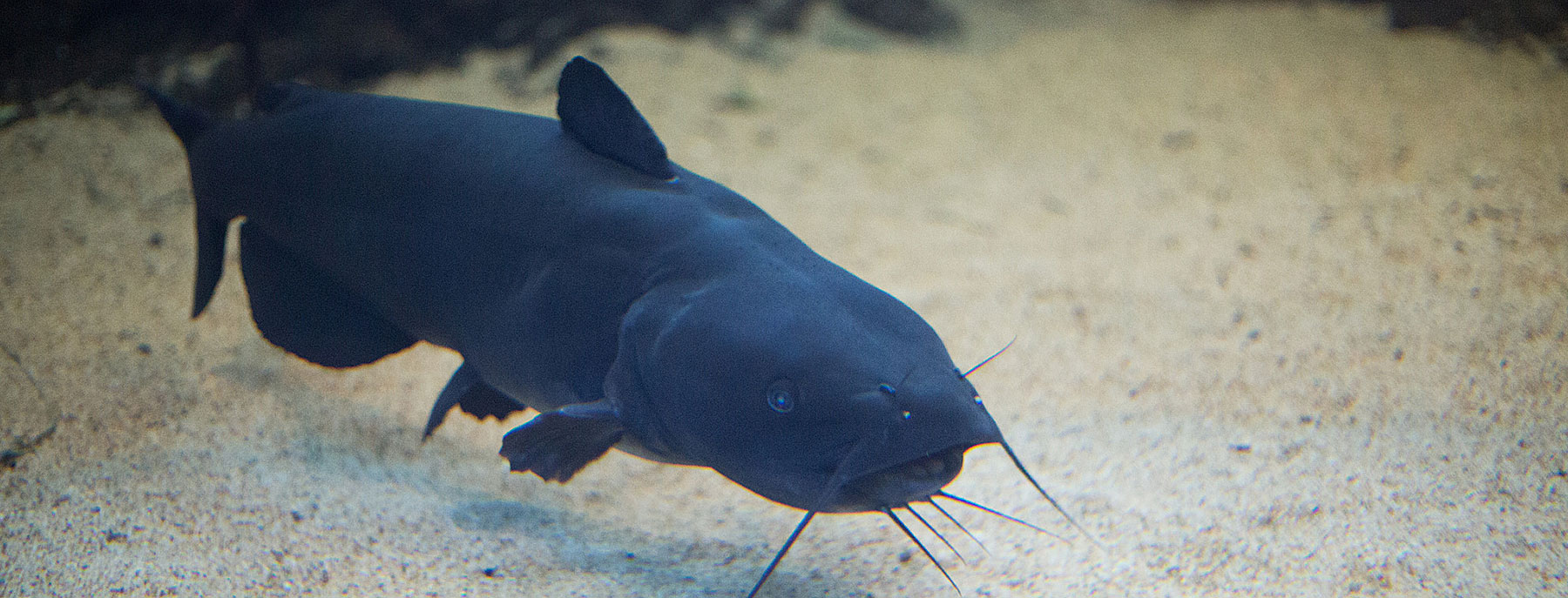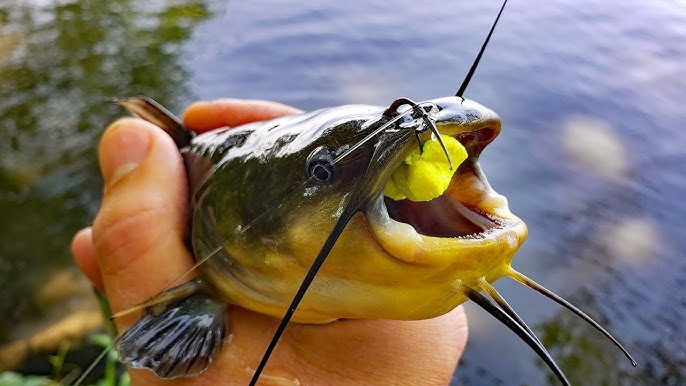The black bullhead, a stocky and tenacious catfish species, ignites a passion for anglers seeking a fun and action-packed fishing adventure. Renowned for their whiskered charm, dark coloration, and spirited battles, these fish are abundant in warm, slow-moving waters across North America. But to consistently entice these bottom-dwelling creatures, a deeper understanding of their behavior and a strategic approach are essential. This comprehensive guide delves into the world of black bullhead fishing, empowering you with the knowledge and techniques to unlock success on the water.
Decoding the Black Bullhead: A Behavioral Blueprint
Black bullheads are masters of adaptation, thriving in various freshwater environments. Here’s a breakdown of key factors to consider:
- Habitat Preferences:
- Slow-Moving or Still Waters: Black bullheads favor the tranquility of ponds, lakes, reservoirs, and sluggish rivers. They gravitate towards areas with muddy or silty bottoms, seeking refuge in the soft substrate. Look for them near:
- Submerged vegetation: Weed beds, lily pads, and overhanging vegetation provide both cover and a buffet of aquatic insects and small fish.
- Underwater structures: Logs, stumps, rocks, and bridge pilings offer shade, ambush points, and breeding grounds.
- Warm Water: These sun-loving fish flourish in warmer water temperatures, typically exceeding 60°F (15°C). Their activity levels peak during spring and summer, but they can still be caught in colder months with the right techniques.
- Slow-Moving or Still Waters: Black bullheads favor the tranquility of ponds, lakes, reservoirs, and sluggish rivers. They gravitate towards areas with muddy or silty bottoms, seeking refuge in the soft substrate. Look for them near:

- Feeding Habits:
- Omnivorous Diet: Black bullheads are opportunistic feeders, readily consuming a diverse menu. Their diet includes:
- Insects: Larvae, grubs, and beetles are a staple food source.
- Worms: Nightcrawlers and earthworms are irresistible to bullheads.
- Small Fish: Minnows and other small fish become prey when the opportunity arises.
- Plant Material: Aquatic plants and detritus contribute to their diet.
- Nocturnal Activity: Black bullheads become more active feeders at night or during low-light conditions. This makes evening and early morning prime times for fishing, as they venture out from cover in search of sustenance.
- Omnivorous Diet: Black bullheads are opportunistic feeders, readily consuming a diverse menu. Their diet includes:
The Right Tools for the Job: Gearing Up for Bullhead Success
Choosing the right equipment is paramount to maximizing your black bullhead fishing success. Here’s a breakdown of the essential components:
- Rods:
- Power: A medium to medium-heavy power rod provides the backbone needed to handle the bullhead’s strong runs and aggressive fighting style. These rods can also handle the occasional snag encountered in their preferred habitats with heavy cover.
- Action: A moderate to fast action rod offers a good balance of sensitivity for detecting subtle bites and the backbone to set the hook effectively.
- Length: A rod between 6 to 7 feet is a versatile choice for most black bullhead fishing situations. It offers good casting control and maneuverability, especially when fishing from a boat or around obstacles.
- Reels:
- Spinning Reels: Spinning reels are generally easier to use, making them a great choice for beginners. Choose a reel with a smooth drag system and sufficient line capacity to handle bullhead runs without breaking the line.
- Baitcasting Reels: For experienced anglers, baitcasting reels offer superior control and casting power, especially when using heavier weights or fishing in windy conditions.
- Lines:
- Monofilament: Monofilament line in the 10-20 lb test range is a cost-effective and user-friendly option for most black bullhead fishing. It offers good shock absorption and knot strength.
- Braided Line: Braided line provides superior strength and sensitivity, making it ideal for fishing in heavy cover or murky water where visibility is limited. However, it requires a fluorocarbon leader to reduce visibility to wary fish.
- Hooks:
- Circle Hooks (Size 4 to 1/0): Circle hooks are highly effective for black bullhead fishing. Their unique design allows the hook to catch in the corner of the fish’s mouth during a fight, reducing the chances of deep hooking and making them easier to remove.
- J-Hooks (Size 4 to 1/0): J-hooks are another option, but be mindful of setting the hook too early to avoid deep hooking.
- Bait:
- Natural Baits: Live baits like nightcrawlers, earthworms, and minnows are highly effective in enticing black bullheads. Cut bait (pieces of fresh fish) can also be productive.
- Prepared Baits: Commercially available catfish baits and dough balls formulated with strong scents and flavors can be attractive options, especially in areas with high fishing pressure where natural baits might be depleted.

Mastering the Art of the Presentation: Effective Techniques for Bullhead Bliss
Black bullhead fishing is not just about casting a line and hoping for the best. Presentation and technique are crucial for enticing bites:
- Fishing Locations:
- Target Cover: Black bullheads are ambush predators, so focus your efforts on areas with abundant cover that provides them with a tactical advantage. Look for submerged logs, stumps, rock piles, weed beds, and overhanging vegetation. These areas offer both shelter and prime locations for bullheads to launch surprise attacks on unsuspecting prey.
- Shallow to Mid-Depth Waters: During the spring and summer evenings, target shallower waters (around 3-6 feet deep) where bullheads actively feed. As the sun climbs higher during the day, or in colder months, they may retreat to slightly deeper water (around 6-10 feet deep).
- Bait Presentation:
- Bottom Fishing: Black bullheads are bottom feeders, so utilize a bottom rig with a sinker to keep your bait near the bottom where they forage for food. Experiment with different sinker weights depending on the water depth and current conditions.
- Slip Bobber Rig: In areas with thick vegetation or when fishing from shore, a slip bobber rig is a valuable tool. It allows you to adjust the depth of your bait presentation easily, keeping it suspended just above the bottom or within the strike zone of bullheads.
- Night Fishing: As previously mentioned, black bullheads are more active at night. Night fishing can be particularly productive, especially during the summer months. Utilize a headlamp or lantern to provide light for yourself and to attract baitfish and insects, which in turn will attract bullheads.

Detecting Bites and Setting the Hook
- Watch the Rod Tip: Black bullheads often nibble or nudge the bait before taking it fully. Stay alert and watch for subtle movements or taps on the rod tip, which indicate a potential bite.
- Feel the Line: With braided line, you may feel the distinctive “thump” of a bullhead taking the bait.
- Use Bite Alarms: In low-light conditions or when using multiple rods, bite alarms or bells attached to the rod can help you detect bites more easily.
- Setting the Hook: When you sense a bite, avoid a forceful yank. Instead, allow the fish to take the bait for a moment before setting the hook with a firm but controlled lift. Circle hooks are particularly helpful in this regard, as they often hook the fish in the corner of the mouth during this brief pause.
Additional Tips for Black Bullhead Fishing Success
- Be Patient: Fishing for black bullhead can require patience, especially if they are not actively feeding. Don’t get discouraged if bites are slow. Try different baits, locations, and techniques to find what works best on that particular day.
- Keep Your Gear Clean: After a day of fishing in muddy or debris-filled waters, clean your rod, reel, and line thoroughly. This removes dirt, grime, and fish slime, preventing damage to your equipment and ensuring smooth operation for your next fishing adventure.
- Handle with Care: Black bullheads have sharp spines on their pectoral and dorsal fins that can inflict a painful sting. Use pliers or a designated catfish hook remover to handle these fish safely. Wet your hands before handling the fish to protect its protective slime coat.
- Respect the Resource: Always practice responsible fishing by following size and creel limits set by local regulations. If you plan to release your catch, handle the fish with care and revive it in the water before releasing it back into its habitat.

Robert Smith is the proud owner of Bait Barrels and Bows, a premier fishing sports store established in 1989. With over three decades of experience in the industry, Robert has honed his skills to become an expert angler, sharing his vast knowledge and passion for fishing with enthusiasts around the world. Through his store and writings, Robert provides invaluable tips and guidance, helping both novice and seasoned anglers improve their techniques and enjoy the sport to its fullest. His commitment to the fishing community is evident in his dedication to quality products and excellent customer service.

